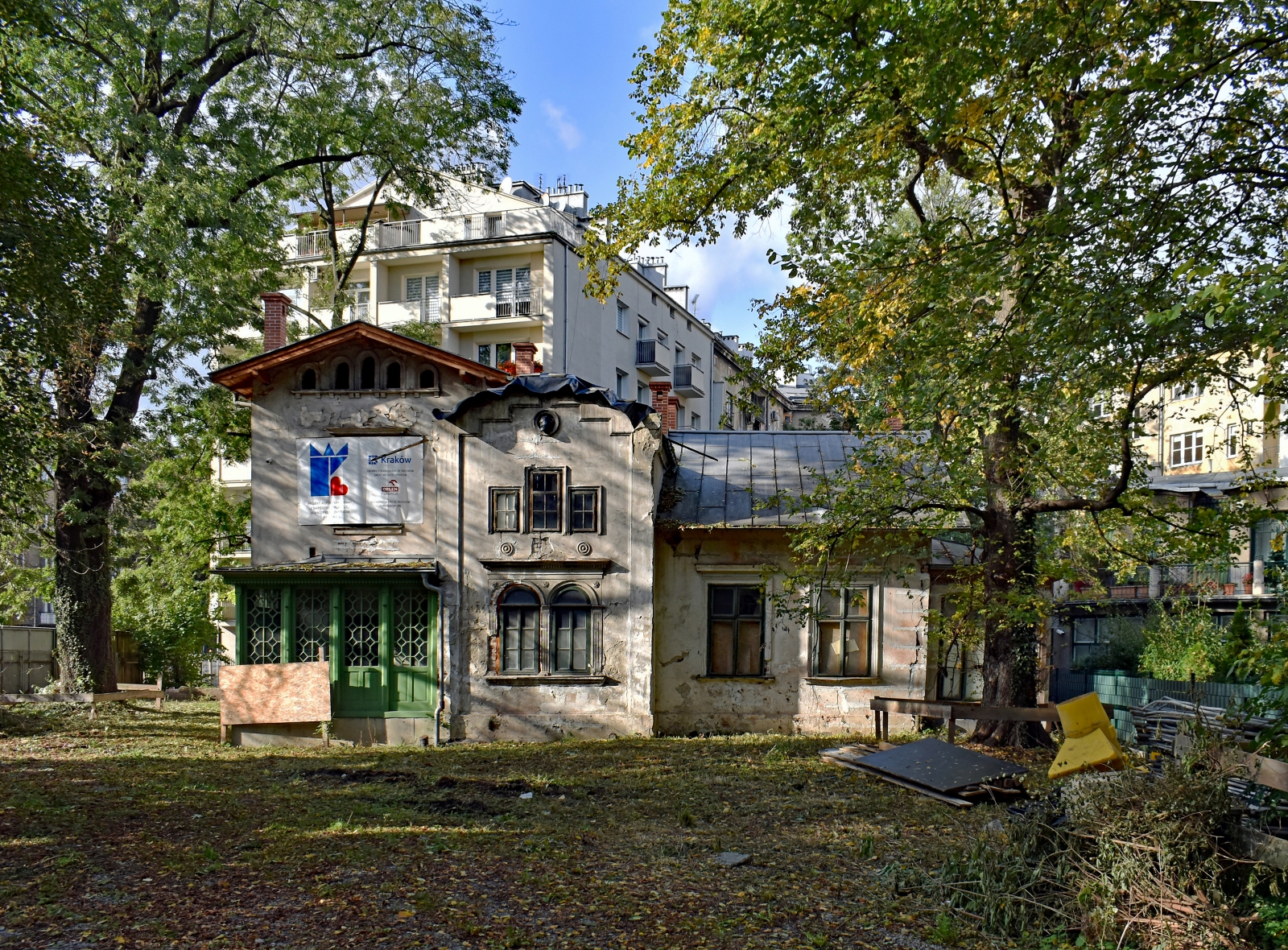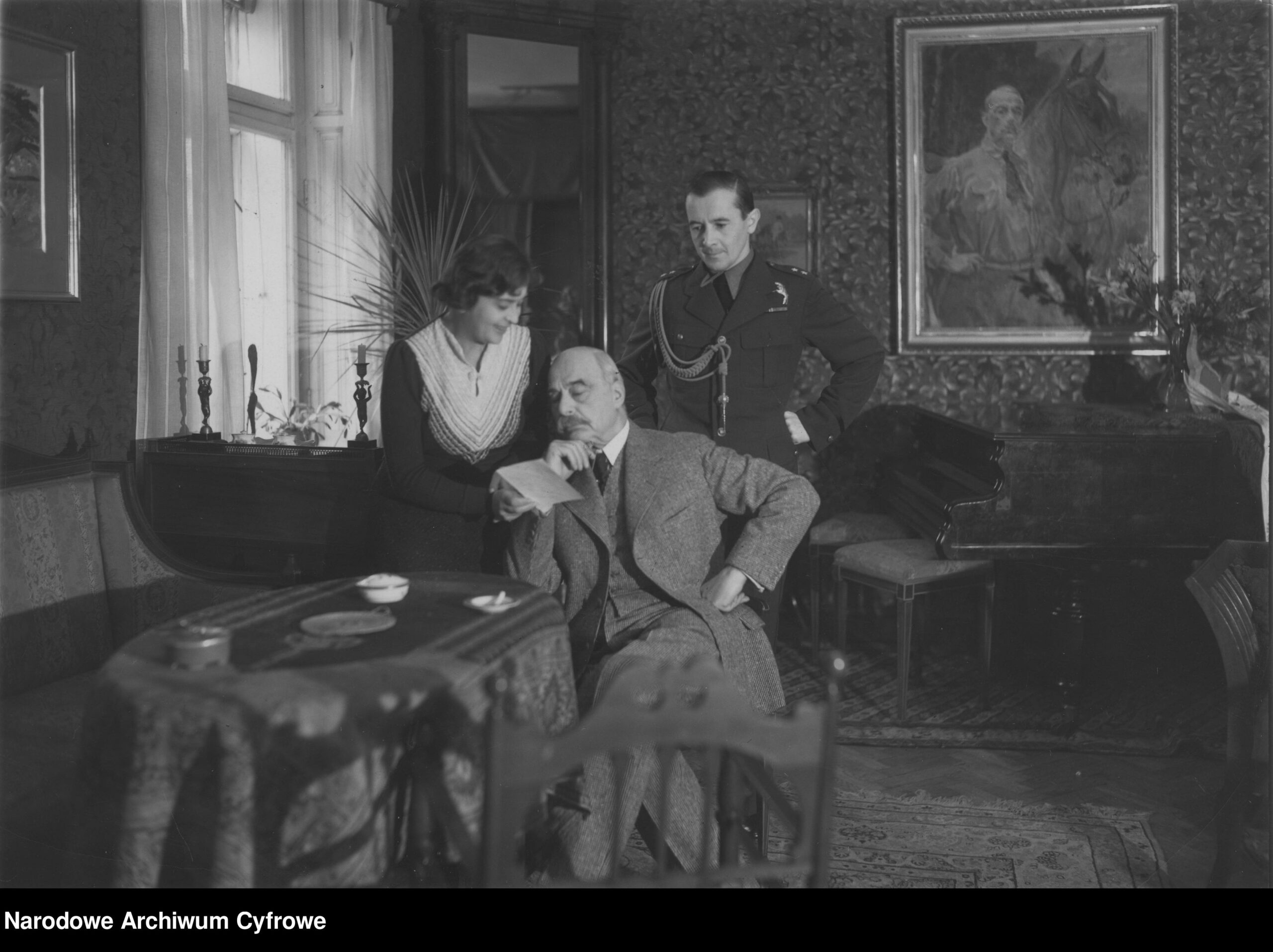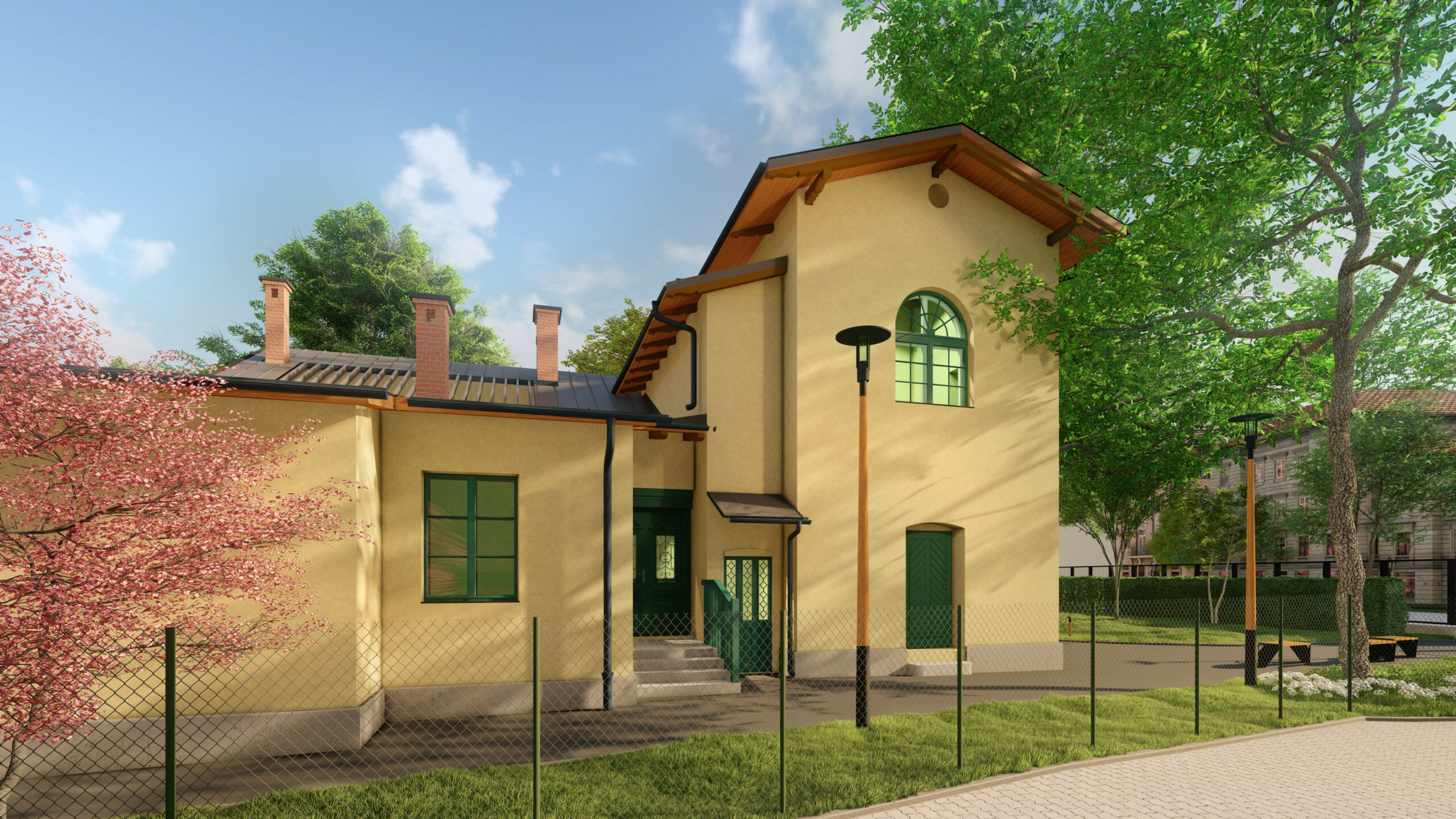Notebooks by Magdalena Samozwaniec were found in the ceiling of the famous Kossakówka, which is currently undergoing major renovation. Workers renovating the Kossakówka came across school notebooks hidden in the ceiling of the staircase, signed by the owner as Magdalena and M. Kossak. According to the Social Committee for Renovation of Krakow Monuments, everything points to the fact that they belonged to the young Magdalena Samozwaniec.
Zeszyty Magdaleny Samozwaniec – who is the author?
Magdalena Samozwaniec de domo Kossak, primo voto Starzewska, secundo voto Niewidowska (1894-1972) was a writer and columnist considered the first lady of Polish satire. She came from the well-known and talented Kossak family. She was the granddaughter of Juliusz Kossak, the daughter of Maria Kisielnicka and Wojciech Kossak – a famous battle painter and owner of a renovated villa, the sister of Jerzy Kossak and the well-known poet Maria Pawlikowska-Jasnorzewska. She made her debut in 1908 with the humoresque ‘Mama’s trip to the city’, published in ‘Nowiny Krakowskie’. Her book published in 1922, ‘Na ustach grzechu. Powieść z życia wyższych sfer towarzyskich”, a parody of “Trędowata”, brought her literary success. She published in “Bluszcz”, “Tygodnik Ilustrowanym”, “Przekrój”, “Szpilki”, “Dziennik Polski”. She is the author of, among others, the satirical novel “Wielki Szlem” (“The Grand Slam”) (1933) or “Błękitna krew” (“Blue Blood”) (1954), in which she depicted the environment of the former landed gentry in a distorting mirror. She published memoirs about her sister: ‘Maria and Magdalena’ and ‘The Blue Suitor’. She died in 1972 in Warsaw and is buried at the Powązki cemetery.
The notebooks were found by workmen on Monday, 29 April, during the renovation of a staircase. They were hidden behind boards in the ceiling and are in good condition. According to the Social Committee for the Renovation of Krakow Monuments (SKOZK), they are most likely notes from the middle stage of primary education, as indicated by both the objects and the tasks written in the notebooks. The unusual find has been taken into conservation care. It will be up to the conservators to return the notebooks to Kossakówka – they may become an exhibit in the Kossak family museum which is under construction at the site.
Kossakówka – renovation
The historic Kossakówka manor and park complex has been part of the MOCAK Museum of Contemporary Art in Krakow since the end of 2019. The villa building and its surroundings are currently undergoing comprehensive renovation. The Museum’s intention is to create a presentation of the achievements of the Kossak family at this location. The renovation of Kossakówka will restore the building to its former charm.
The Kossakówka manor house was purchased in 1869 by the doyen of the family, Juliusz Kossak, who lived there with his wife and five children. The manor was surrounded by a garden, and its location on the outskirts of the city and proximity to the nearby park made it a truly idyllic haven for the artist Kossak. It was here that he created his studio and painted his pictures.
Kossakówka was always bustling with life. Until the Second World War, it was an open house for the intelligentsia and artistic circles of Krakow. In 1884 his son Wojciech took over the villa from his father. From then on, there were two studios of two outstanding Polish painters in Kossakówka. The care of the family nest was taken over by the new Mrs Kossakowa, Maria Wojciechowa, after her grandmother Juliuszowa. Kossakówka thus became the family home for the next generation of this artistic family, Wojciech’s children: Jerzy Kossak, Maria Pawlikowska-Jasnorzewska and Magdalena Samozwaniec. In 1942, after Wojciech’s death, his son Jerzy took over the house. After his sisters left, he lived there with his wife and children. After the war, the Kossakówka was in danger of being demolished, but it was saved by the attitude of Jerzy’s wife, who won recognition of the building as a national monument. In 1960, the manor house was entered in the register of historical monuments and was renovated, but that was the end of the state protectorate. In the 1980s it began to deteriorate.
Villa Kossakówka in 1936 and 2020. Source: National Digital Archive and photo by Rafał Sosin
The building in 2023 and in the visualisation. Source: Zygmunt Put, CC BY-SA 4.0, via Wikimedia Commons and LEM Studio Architektoniczne
The contractor for the work is ARCO System. The building is planned to replace all ceilings and level the floors. As there are relatively few original elements remaining in the manor house, it was decided that all remnants of the former furnishings should be saved. As part of the work, secondary partition walls, which have chaotically changed the layout of the rooms, will be removed. The building will receive new window and door joinery based on the historic one, a new façade and roof. The Kossakówka garden will be arranged according to a design based on historical materials and agreed with the Małopolski Provincial Conservator of Monuments.
The renovation of the manor house is co-financed by the Municipality of Krakow, the Social Committee for Renovation of Krakow Monuments, the National Fund for Renovation of Krakow Monuments and the Orlen Foundation. The rooms of the renovated Kossakówka will be dedicated to the individual members of the Kossak family who lived in the former villa. In addition to permanent exhibitions presenting the creative achievements of the artistic family, temporary exhibitions will be held in the spaces of the former museum. Readers will have access to a library, the book collection of which is currently being completed. In the MOCAK branch under construction, extensive educational activities are planned, including guided tours, workshops, museum lessons and meetings.
Source: Museum of Contemporary Art in Krakow MOCAK
Read also: Architecture | Renovation | City | Krakow | Architecture in Poland | Villas and residences
Subject: Renovation of Kossakówka – the family nest of a famous Krakow family of artists – has started









































